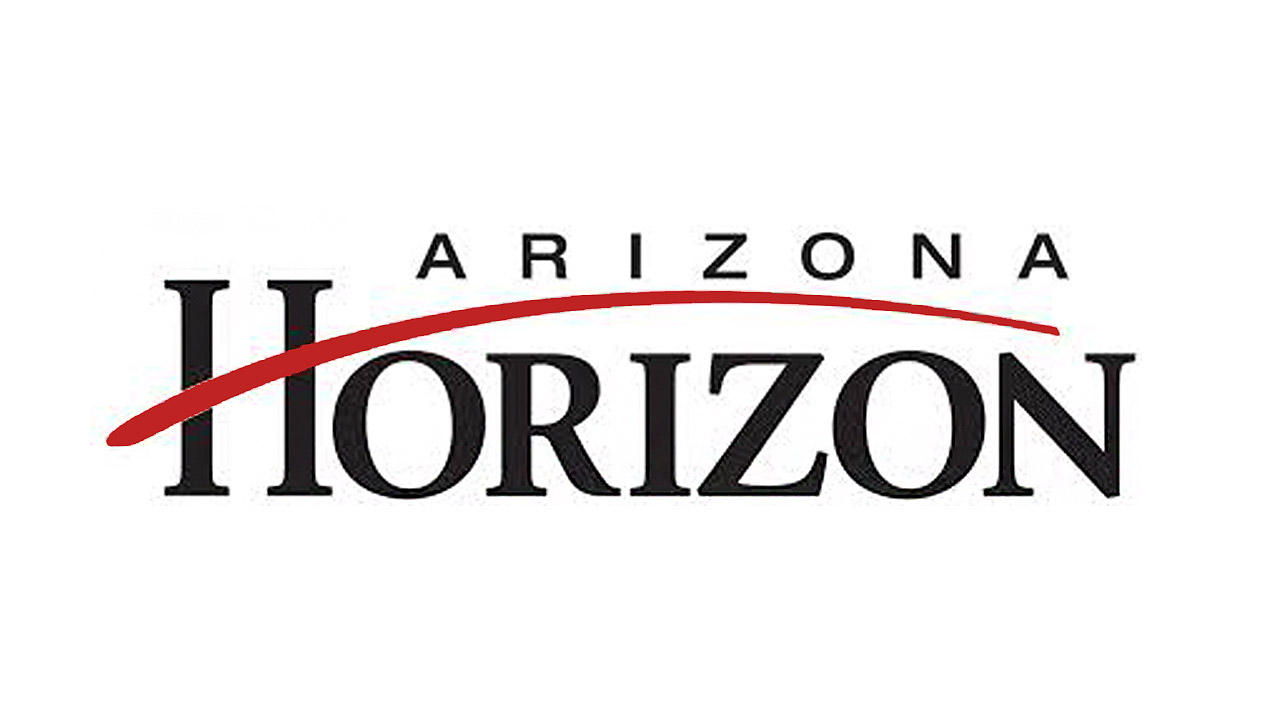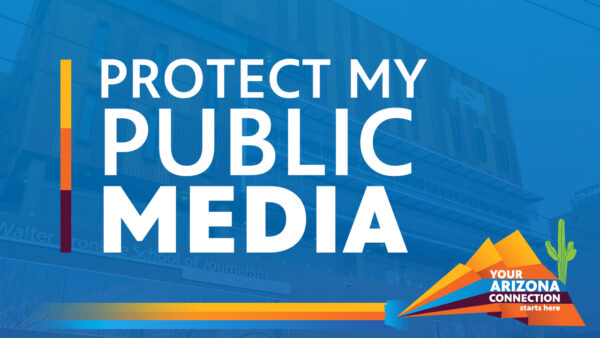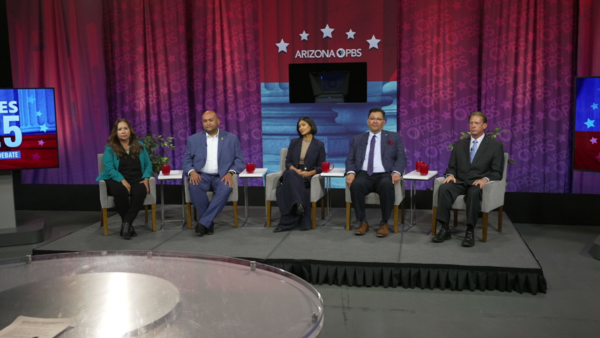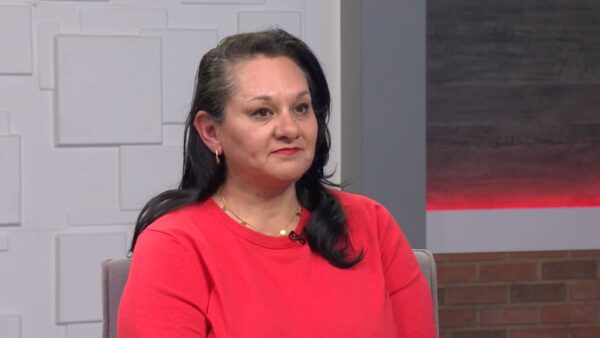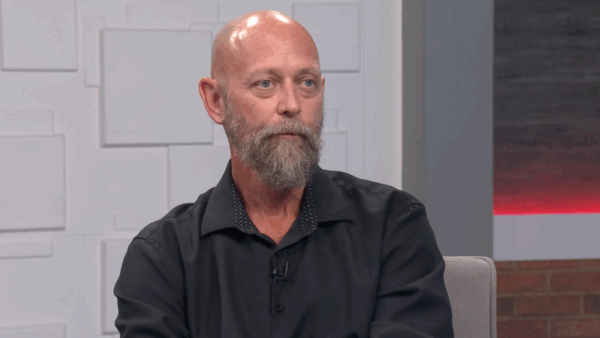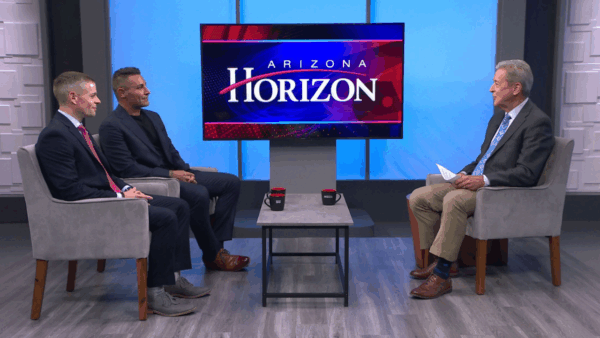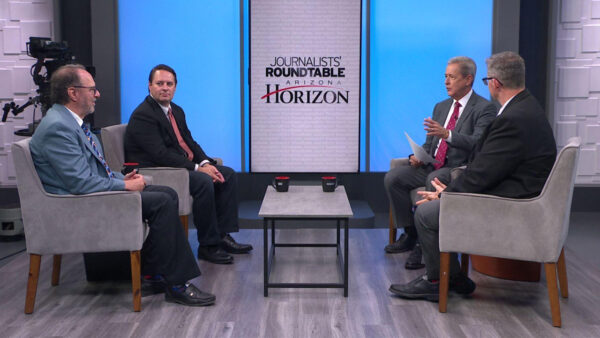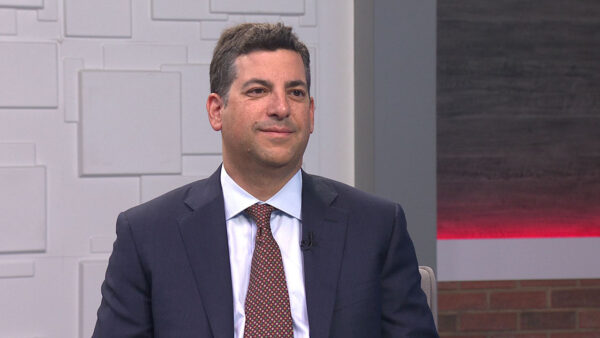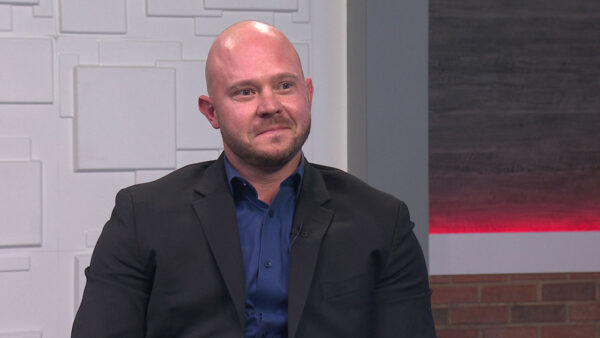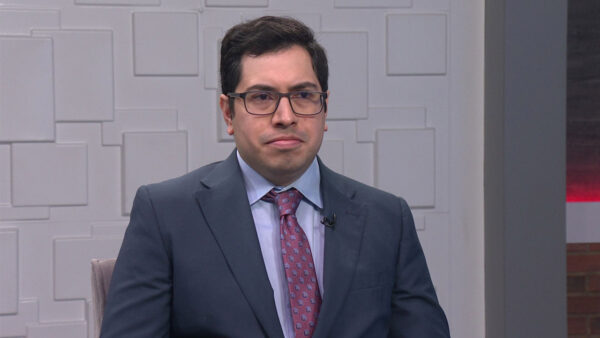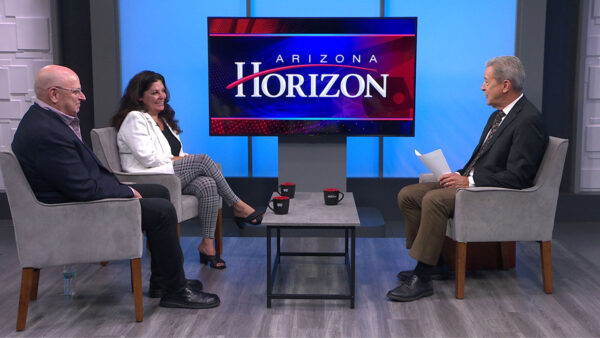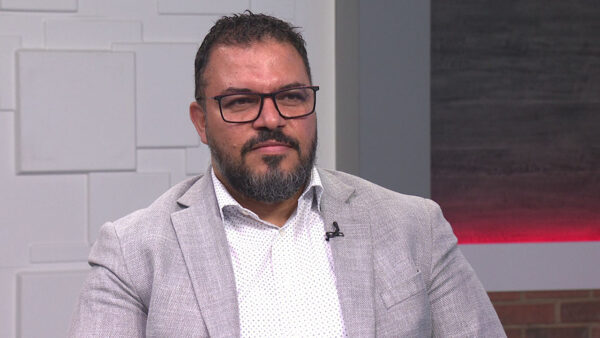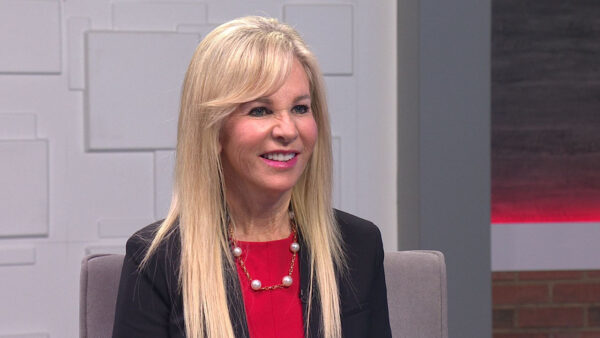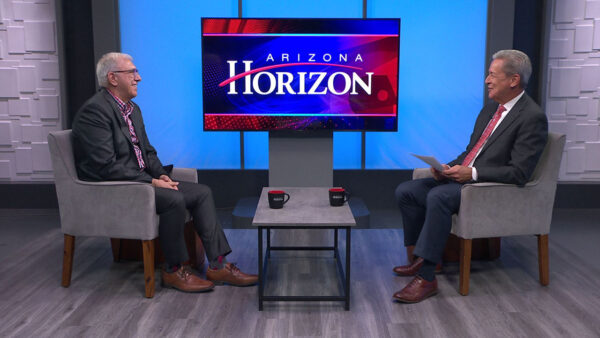Why some schools with Latino children beat the odds and why others don’t is the topic of a new report by Arizona State University’s Morrison Institute and the Center for the Future of Arizona. Lattie Coor, CEO, Center for the Future of Arizona, and Mary Jo Waits, senior fellow, join Michael Grant to discuss the report’s findings.
Michael Grant:
Tonight on "Horizon," a political battle ends as the governor allows a corporate tuition tax credit to become law without her signature. Learn more about what the tax credit will do. Why some schools with the majority of Hispanic kids fail, and why others succeed is the topic of a new report. We'll talk to an author of that report. Plus we'll tell you about one school with a large number of Hispanic kids that is doing quite well.
More on all that, next on "Horizon." Good evening, welcome to "Horizon," I'm Michael Grant. In the headlines, Arizona house passes a bill today that would make illegal alien status a felony in Arizona. That bill has already been approved by the senate, but it will return to that chamber to consider changes made by the house. The bill also authorizing law enforcement officers to question the nationality and the immigration status of a person being arrested. After a heated battle at the state's capitol, a law allowing corporations to get dollar for dollar tax credits for donations to private school tax organizations was enacted without the governor's signature. That measure was at the center of a disagreement between the governor and the republican-led legislature. It was included as part of the English Language Learner bill early in the legislative session. Now the politics of that issue can rest, the legislature can move on to budget issues, school choice advocates can discuss how the measure can benefit low-income students. Here to do that is Darcy Olson, president and C.E.O. of the Goldwater Institute. Darcy, it's good to see you.
Darcy Olson:
It's good to be here.
Michael Grant:
I know this is tough, but how many students do we estimate -- this is $5 million as a lump sum.
Darcy Olson:
Right. $5 million, and we'd love for that amount to be larger, and over time maybe it will be. But the scholarships for the children can be up to $5,000 apiece. So this is enough money for a parent to take that sum and find a good independent or private school that can teach their child, meet their child's needs, and afford that tuition. And in the meantime, it saves the pun school system money, because that's a smaller sum than would be spent over here in this school. So it's really -- it's a great program for students. Put yourself in the shoes of a parent in the Roosevelt school district, for instance. There you've got most of the schools are not -- they're failing the aims test, so you've 3 got a fourth grader, your child is not reading, you want to go to another local public school. They're failing too, so you want a charter school. A lot of the good charter schools have two-year waiting lists because they're not able to keep up with the growth of the state. This is an option. So here's this parent, nowhere to turn, now they can go to a scholarship organization that can help them afford to take their child out of the school that's not getting -- teaching them reading, or writing, or maybe they're not safe, and put them in a better climate.
Michael Grant:
The mechanics of this for a corporation are literally the same as it is -- we've had individual tax credits for a number of years, and this really just allows a corporation to make a contribution.
Darcy Olson:
That's right. The corporation itself does not benefit. All it says is, they've got a tax liability, and instead of sending it to the state's general fund, they can redirect it to a scholarship organization that will be then given to a student to help them attend a school.
Michael Grant:
Now, kicked around from time to time was whether or not there would be some cap on this per corporation. Is that a feature of this, or not?
Darcy Olson:
There's no cap per company, so if you have a $5 tax liability or $500, or a million, your company can redirect that. But the overall program is capped at just $5 million a year. Which of course limits the amount of scholarships available to students, and we'd like to see that cap raised in the future.
Michael Grant:
Let me return to a point that you just made. This requires either the scholarship would go to a kindergartener, a new entrant, or it would require a switch from the public school system into charter school or whatever school it would be, so you don't have a phenomenon where, for example, this kind of scholarship can be used for someone already in a private school.
Darcy Olson:
That's right. This was designed to help the children in the neediest situations. At lower income children, first of all, so it is income restricted, and those who are not already in a private school by choice. So these are going to be the children who have not entered school yet at all, or who are in a public school and for whatever reason are not doing well in the school and they need an option. Those are the children these scholarships are for.
Michael Grant:
And the purpose of that provision was to really obviously reduce some of the expense on the public school system as opposed to just becoming a subsidy for people already.
Darcy Olson:
Absolutely. The public school is spending about $8,000 per pupil, but $4,000 is enough to pay tuition at the average private school in the state, which is really I think lower than many people know. That can be -- stay in the school to help with things the school needs, or go into tax cuts, anything, but there's a great deal of savings. Largely because the private sector tends to be more efficient and effective, and that is the case and the difference between the private schools and public schools and how much they cost.
Michael Grant:
How unique is a corporate tax credit to Arizona?
Darcy Olson:
Arizona's the third state in the nation to have one, also Florida and Pennsylvania have them as well. But I will say that Arizona at this point is leading the nation in its options for school choice, we can choose between public schools, we have charter schools, we have the individual scholarship tax credit where you or I could take part of our taxes and help a child get a scholarship, and now we have the one that -- where businesses can use their tax liability and help children get scholarships. But we still have a long way to go. Not more than 10% of the children in the state are helped with these programs, so there's a great deal of expansion ahead, and really we need a universal Grant system so every child has the option to take that money and find the best possible school and environment for them.
Michael Grant:
What's the income qualification for this kind of scholarship, the ones that are earmarked for this program?
Darcy Olson:
This is about 185% above the qualification for free and reduced lunch. So it would be roughly -- if you were making $50,000 and had a family of four, you could probably just get in.
Michael Grant:
Ok. Now, you talked about the 5,000 mark, but there also may be some level of students who, for example, might only get a scholarship of $1,000 or $2,000.
Darcy Olson:
Sure. A scholarship organization, for instance, might say, look, we want to give as many children scholarships as possible, so we'll give you $2,000, and your parents have to add $1,000 or $2,000, or contribute something to the school. That's a way of making the money go further. So they could be as small as $500, or up to roughly $5,000 limit, it depends on the grade level.
Michael Grant:
Five-year sunset provision built into the bill?
Darcy Olson:
Right. I'll say this is one -- it has a sunset built on to it this, is one of the few times I'm glad for this, which is that government programs rarely sunset, if ever. And we're hopeful not only will this not sunset, but it will expand and grow in time.
Michael Grant:
Ok. Darcy Olson of the Goldwater Institute, we appreciate very much the information.
Darcy Olson:
Thank you.
Michael Grant:
Take care. Southwest will become the Appalachia of the 21st century. That's what one of the authors of a new report on schools with large Hispanic populations was told while talking about a previous report in Kentucky. The person who said that gave this reason -- Arizona has a large population of Hispanics, which like the people in the Appalachia region have low levels of education. That spurred the report's author to conduct a new study on what makes some schools with poor, largely Hispanic populations successful. We'll talk more about the report, but first here's an overview.
Mike Sauceda:
The report, why some schools with Latino children beat the odds and others don't, borrowed some of its approach from the book "Good to Grace," how some businesses go from good to great. The research question decided upon was what does it take to get great results in educational achievement in a school with a student enrollment mostly Latino, poor, and has many students still learning English? The author of the report select add criteria for measuring success in schools, third grade reading and eighth grade math scores. Then they sifted through 331 schools in Arizona that have a Latino school enrollment of 50% or more, along with 50% or more poor kids. Test scores over an eight-year period were examined. 12 schools were chosen, steady performers or steady climbers, steady performers had test scores above the average and consistently above what one might expect with a largely poor Latino population. Steady climbers had an increase of 9.5% over the eight-year period. Those schools were examined to ferret out reasons for their success. There were six factors discovered. The clear bottom line, doing the best for every student, no matter what the circumstances, ongoing assessment to spot problems early, a strong and steady school principal, collaborative solution was problem solving throughout the ranks, not just concentrated at the top of the school organization, sticking with the program, and built to suit intervention that's suit each student's needs.
Michael Grant:
Here now to talk about the report on Hispanic schools is former Arizona State University president Lattie Coor. He is currently C.E.O. of the center for the future of Arizona, which produced the report, along with A.S.U.'s Morrison institute. It's good to see you again.
Lattie Coor: Good to see you, Michael.
Michael Grant:
Now, Mary Jo waits, one of the authors of the report, was at this conference where this Appalachian comment was made, southwest is the next Appalachia?
Lattie Coor:
One of the great things that's happened in Arizona in public policy terms was the report five shoes waiting to drop in year 2001. And one of the five shoes that was identified was what Mary Jo waits as the author of the report called the Latino education dilemma. She had a chart in the report that showed rapidly growing Latino population throughout the southwest, and had that as she was displaying the report at a conference in Kentucky. The person who followed her, and I don't know where he was from, another speaker, had the same graph for some other purpose. And as Mary Jo reports in this beat the odds report we're releasing today, he pointed to the graph and said, this, meaning the southwest, is America's next Appalachia. And those were fighting words to Mary Jo. She said, "What do you mean? Do you think we won't make sure we succeed?" he said, "i repeat -- this will be the next American Appalachia."
Michael Grant:
right now the places in some context -- to place this in context, there's about a 20-point spread between overall dropout rates and the Hispanic dropout rate.
Lattie Coor:
That's right, in terms of the graduation rates, that's true.
Michael Grant:
This report, interesting methodology, I think a lot of people are familiar with the book Good to Great, where you charted a series of companies that had done exceptionally well on standard & poors and really compared them against companies that had not done so well. And the methodology here, sort of the approached it the same way.
Lattie Coor:
It's the genius of this report, I think. When our center, the center for the future of Arizona, got started three years ago with this very evocative shoe that was mentioned in "five shoes waiting to drop," we went to Mary Jo and said, ok, what should we do about this now? And she said, "You know, there's an interesting methodology in Jim Collins' book that you've just mentioned in which he does what he calls matched pairs. Where you take in his instance a company that is knocking the socks off, compare it with another company that is exactly the same in every respect except the comparison -- is putting along, and she said, "I think that would represent a very fresh and effective way to look at Arizona schools."
Michael Grant:
So the first chart is you identifying schools which meet two criteria, 50% Hispanic, or better, and 50% school lunch, low-income.
Lattie Coor:
That's correct.
Michael Grant:
Over 300 of those.
Lattie Coor:
331. We're focusing on third grade reading and eighth grade math. So the 331 schools that are 50% Latino, 50% free and reduced lunch, poor, lower socioeconomic, are drawn from that population of either elementary schools or middle schools. 331.
Michael Grant:
And then using the criteria that you referred to, the Stanford nine focus order third reading and eighth grade math identified 12 of those that are consistently over an eight-year time frame performing very well.
Lattie Coor: That's right. What the study did, and it was a wonderful study team that Mary Jo waits led, active participation by some faculty and staff members from A.S.U. through the Morrison Institute, they predicted what the results of the student performance would be based on the demographics. Based on low-income, high-percentage Latino enrollment, and looked for those schools, general -- again, just like the methodology of Jim Collins, that were performing well beyond the expected rate, and had done so, did so over the entire eight-year period that the study was done.
Michael Grant:
Ok. Let me get to some of the takeaway points. Disciplined thought was a commonality among the 12. What does that mean?
Lattie Coor:
One of the most interesting parts of the whole study was the consistency with which high-performing schools as compared with those that were not performing well, the consistency with which first they established a clear bottom line, they knew what the focus was, they knew what they were endeavoring to teach students and third grade reading, eighth grade math, and the consistency with which they went about ensuring that occurred. One of the keys to that was regular, continuous, assessment of student performance right at the grade level. The teacher in concert with the principal and the other teachers did that assessment and made adjustments as necessary.
Michael Grant:
So you are not waiting until December or may to say, sorry, you didn't do it, you're checking the first week of September and the second week of September, and so on.
Lattie Coor:
That's right.
Michael Grant:
Didn't find any silver bullets. In other words, in this group of 12, you didn't find seven of them all did this. That's kind of interesting.
Lattie Coor:
I think that's one of the important findings. The study, it parallels what Jim Collins found in his study of companies good to great. It's the focus and the discipline. Take a good program, it doesn't really matter which one it is, as long as it's a good one. And you use it in a very clear disciplined way over time. No silver bullets, no single thing is going to make it happen, but the kind of teamwork of hard work that gets you through to the finish line.
Michael Grant:
Disciplined action here, and I guess what I took away from the report on that is stick with the plan, don't be saying, no, hold it, this is a great idea, let's try this for a while.
Lattie Coor:
In fact, that's one of the most interesting features as well in the presentation that we did today in going public with the report, and Jim Collins was here with us to help discuss it. He said he recently turned his attention to mediocrity, having spent so much time looking at good "good to great," and he said it wasn't that mediocrity appeared when organizations were not changing, they weren't resisting to change, it's that they kept changing inconsistently. So they'd change here, and change there. What this study found was that you stick with it, you tweak it if it needs some perfecting, but you stick with it and you do so over the long period of time.
Michael Grant:
Sometimes that requires just a whole lot of, well, discipline for lack of a better term.
Lattie Coor:
That's right. Common sense, but not common practice.
Michael Grant:
Former A.S.U. president Lattie Coor, it's good to see you again. Appreciate the information on the report.
Lattie Coor:
My pleasure.
Michael Grant:
While it wasn't part of the report we just talked about, there is a school located in a poor neighborhood in Phoenix with a large percentage of Hispanic students that is producing some high-test scores. That school, a magnet school, even attracts students from outside the area. This story was done while lawmakers and the governor were still struggling with the English Learner funding issue, which has since been at least temporarily resolved. Mike Sauceda tells us about the school with a unique program for English Learners.
Teacher:
Where does it go when you're done? Where do you put it when your done so we can publish it?
Mike Sauceda:
Sylvester school for the fine arts is located southeast of downtown Phoenix. It's in a poor neighborhood with 83% of the 771 k-12 students at the school qualifying for the free lunch program. Many of the students come to the school unable to speak English. But like the Congressional Medal of Honor beats the odds. The school's test scores are some cases higher than its rate of kids on free lunch. 89% of the eighth graders passed the writing portion of the test, 76 passed the reading test and students achieved these scores while learning Spanish and English through the sixth grade in a dual language program different from bilingual education.
Tracy Pastor:
In your transitional bilingual model, the students would transition out. Eventually they would get to the point where all of their instruction would be in English. And we don't transition them out. We maintain the 50/50 model, which is 50% of their instruction in English, and 50% in Spanish, until sixth grade. We can't continue the program unfortunately in seventh and eighth grade because the students are coming from all throughout the district. So that's one major difference. And the second difference is that we also have English speakers in the program learning Spanish as their second language.
Mike Sauceda:
Nivaldo Morales' sixth grade class works on fractions. One fraction which occurs naturally in the class is the 50/50 split in instruction in English and Spanish. Mr. Morales says the program does work teaching native English speakers Spanish.
Nivaldo Morales:
It also works the other way. Some students came here knowing no English at all, and now they're fluent in both languages. They have kept their home language, which was Spanish, and now they're also speaking English.
Mike Sauceda:
In 2000, Arizonans passed a law prohibiting bilingual education. He says because the school's program is a dual language program, and all parents who participate do so voluntarily and sign waivers, the school isn't come -- is in compliance with the law. The school also offers a structured English immersion program that makes the school a living lab to compare how immersion works versus a dual language program.
Tracy Pastor:
Academically our students that are in the dual language program are doing as well or better in many cases than the students that are here in the same school in the S.E.I. program. We're proud of our results across the board. Our students have been doing very well for the past three years on the aims tests, and for a school with a high E.L.L. population, I think it shows that offering a different program for your students helps the parents find the right fit for their child, and the students to excel in a program that really works for them.
Mike Sauceda:
They also have an arts magnet program for 6th-8th graders. Students learning English are at the forefront of a battle that's raged at the state capitol. It started with a lawsuit in 1992 over the lack of funding for bilingual programs, a federal judge ordered the state to properly fund the programs or face fines of half a million dollars a day, starting January 24. Those fines have started because lawmakers have passed at least two bills this session to address the issue, but both were vetoed by the governor in part because of a tuition tax credit included in the bill, but also because she didn't feel it addressed the main issue.
Govenor Janet Napolitano:
Well, I think that there are numerous flaws, and if you look at both veto messages, I believe that the E.L.L. part of this bill is inadequate to meet the court's order.
Rep. Jim Weiers:
When the judge said, I want to see something, he didn't say, I want to see something the governor agrees with. He said, I want the legislature to produce a product. And we produced a product last year, it was vetoed. We produced two subsequent products, and they've been vetoed.
Mike Sauceda:
It seems the governor and lawmakers are speaking two languages when it comes to funding for English Learner programs. But the bottom line is schools like this are not getting more money to help with teaching English Learners, which presents extra costs in the form of materials, teacher training, and translation services, just to name a few things. They've been able to carry out their program thanks to a grant. She says the legislature's offer of $14 million would have given schools like this one about $75 per student per year, which would buy two hours of tutoring for an English Learner. She says educating English Learners is essential to society.
Tracy Pastor:
The consequences of having the English Language Learners leave in this case because of a k-8 school, having them leave unprepared for high school, we're looking at a higher dropout rate, Arizona has a drop-out rate that many have said, well, the English language learners are a huge part of that, and having them start high school and not be prepared for the academic English I think is a huge determining factor in whether or not they succeed, and it's our job to have them as prepared as possible.
Producer:
The protest against a bill that would make it a felony to be in the country illegally continued this week. State lawmakers passed their own version after bill that would make it a felony to be illegal in Arizona. And the governor let as bill through that end as long fight between her and the legislature. The Round Table, Friday at 7:00 on "Horizon."
Michael Grant:
Thanks for joining us on a Thursday. I'm Michael Grant. Have a great one. Good night.
Darcy Olson:president and C.E.O., Goldwater Institute;
